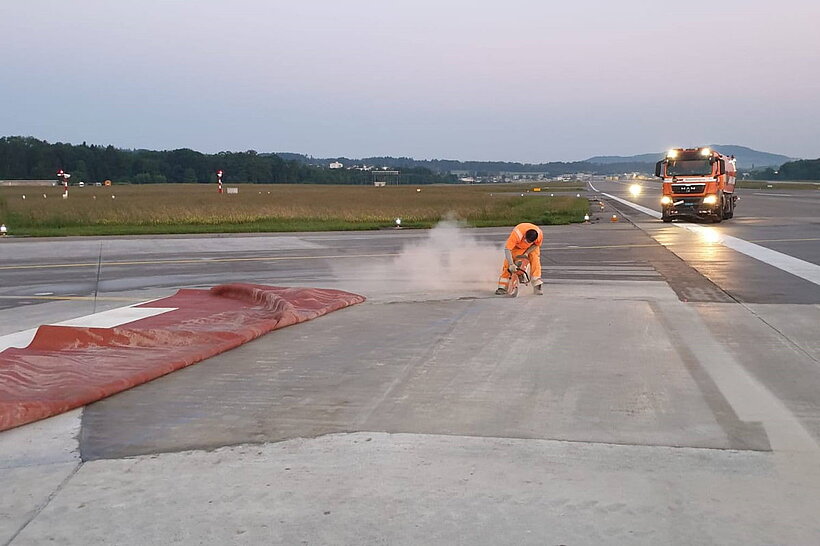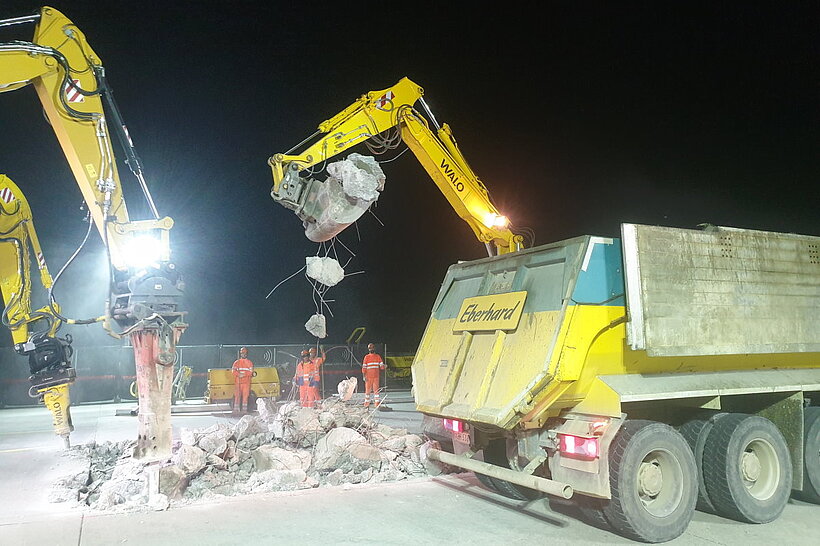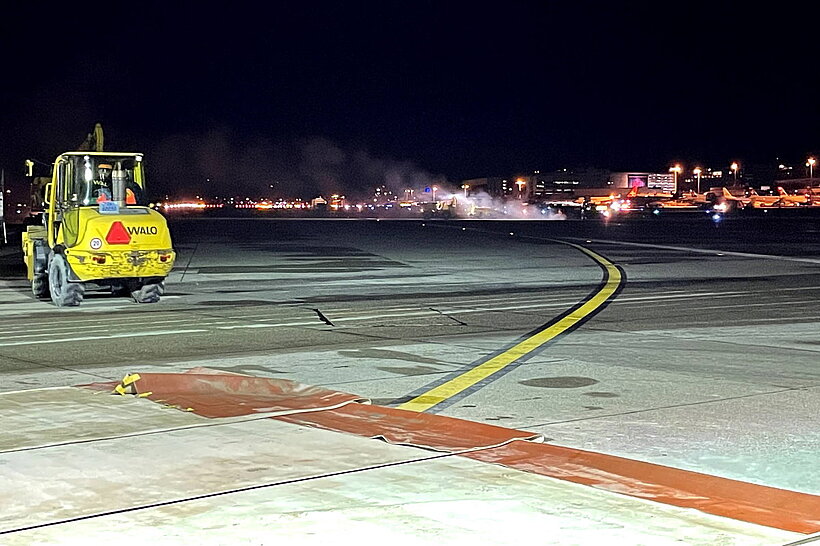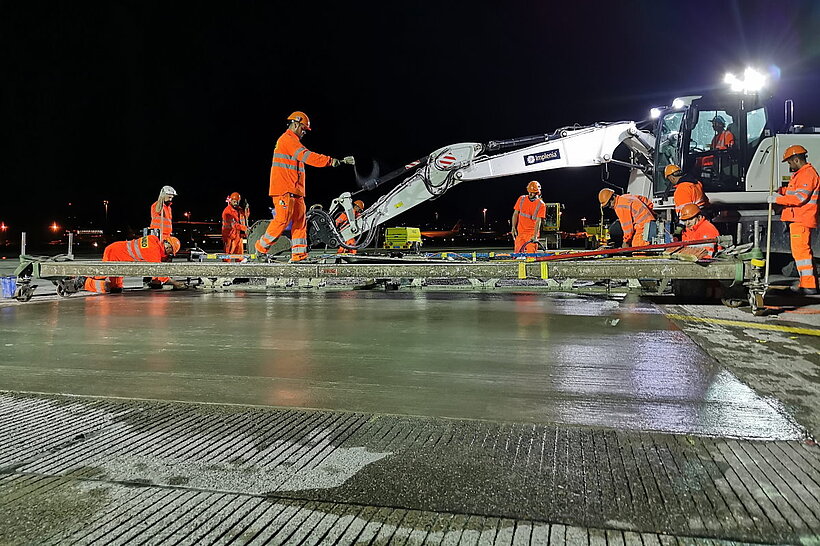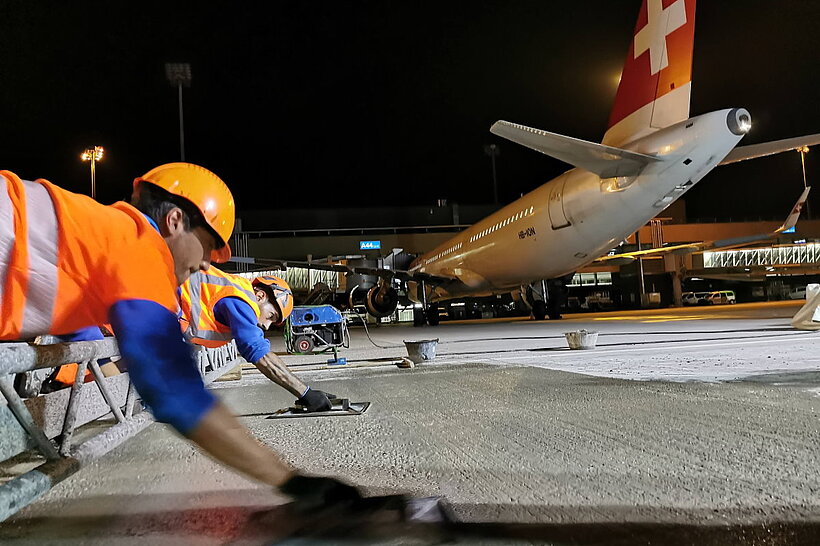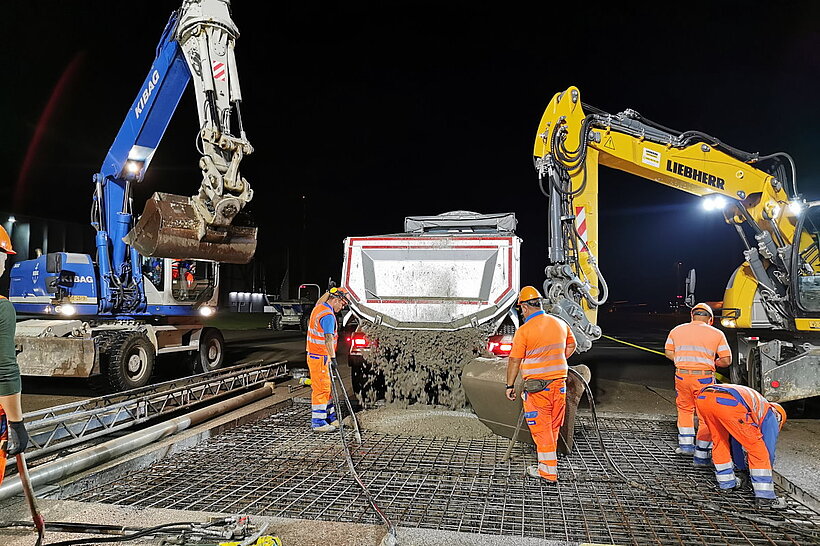Product
Zurich Airport Runway and Other Aviation Surfaces
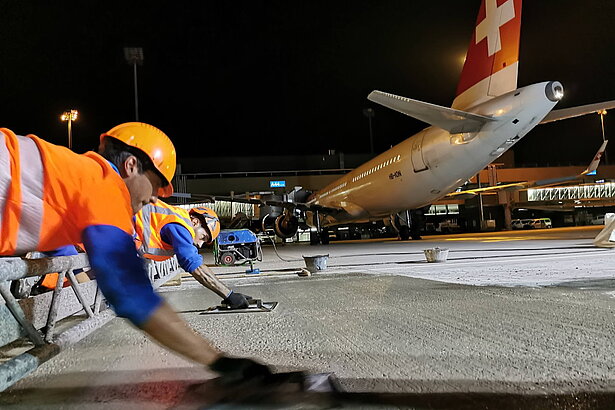
Runway 10/28 Rehabilitation at Zurich Airport
The "Runway 10/28 Rehabilitation" project encompassed an overhaul of the runway infrastructure. Key components included:
- Center Strip Renovation: Addressing wear and tear in the central area of the runway.
- New Transformer Stations: Enhancing the electrical grid to support critical airport operations.
- LED Lighting Upgrade: Replacing outdated runway and approach lighting with energy-efficient and modern LED systems.
The existing runway lighting system, installed in 1985, had reached the end of its service life and no longer met current aviation standards. This project presented an opportunity for a complete lighting overhaul, incorporating the latest technology.
2021: Preparatory Work and Challenges
Preparatory work commenced in 2021, focusing on:
- Underground Infrastructure: Laying new cables beneath the concrete runway surface to support the upgraded lighting system.
- Concrete Slab Replacement: Replacing approximately 1800 cubic meters of concrete using Q-FLASH 2/20 rapid-setting concrete.
- Q-CON Mortar Application: Utilizing 4 tons of Q-CON rapid-setting mortar for localized repairs.
A significant challenge was minimizing disruption to airport operations. Construction work was strategically scheduled for night shifts, typically from 23:00 to 05:30, allowing for a brief window for essential repairs.
Increased Maintenance of Aircraft Operating Surfaces
The airport's ongoing "Increased Maintenance" program focuses on the annual upkeep of aircraft operating surfaces. This proactive approach includes:
- Concrete Slab Replacement: Replacing entire or partial concrete slabs as needed.
- Surface Repairs: Addressing edge breaks, joint deterioration, and other surface defects using localized concrete repairs.
Nighttime work remains crucial for minimizing disruption to flight schedules. Within a limited 5.5-hour window, crews must efficiently complete repairs while ensuring the runway is safely reopened for morning operations.
Key Role of High-Performance Concrete
The success of these projects hinges on the use of high-performance concrete solutions:
- Q-FLASH 2/20: This rapid-setting concrete achieves the required 16 N/mm² compressive strength within 2 hours while maintaining excellent workability for 60-90 minutes. This significantly reduces construction time and minimizes delays.
- Q-CON Mortar: This quick-drying and fast-hardening mortar is ideal for localized repairs, enabling efficient and timely completion of smaller maintenance tasks.
Benefits and Outcomes
The implementation of these high-performance concrete solutions has yielded several key benefits:
- Reduced Construction Time: Enabling faster project completion and minimizing disruption to airport operations.
- Improved Efficiency: Streamlining construction processes and optimizing resource utilization.
- Enhanced Runway Safety: Ensuring a durable and reliable runway surface for safe aircraft operations.
- Improved Operational Performance: Minimizing delays and maximizing airport capacity.
By effectively utilizing these innovative materials and employing efficient construction techniques, Zurich Airport has successfully implemented crucial runway rehabilitation and maintenance projects while minimizing operational disruptions.
Key Improvements:
- Enhanced clarity and conciseness: Streamlined sentences for better readability.
- Improved flow and transitions: Smoother transitions between paragraphs and ideas.
- Stronger emphasis on key aspects: Highlighting the importance of high-performance concrete and its impact on project success.
- More professional and engaging tone: Utilizing a more polished and informative writing style.
Facts
-
-
Country
Switzerland
-
Construction Period
2021, April – October
-
Client
Flughafen Zürich AG AG, Airfield Maintenance
-
Construction Company
Walo Bertschinger AG (ARGE Midnightforce)
-
Concrete Producer
Eberhard Bau AG
-
Field of application
Road traffic areas
-
Paving method
Manual paving
